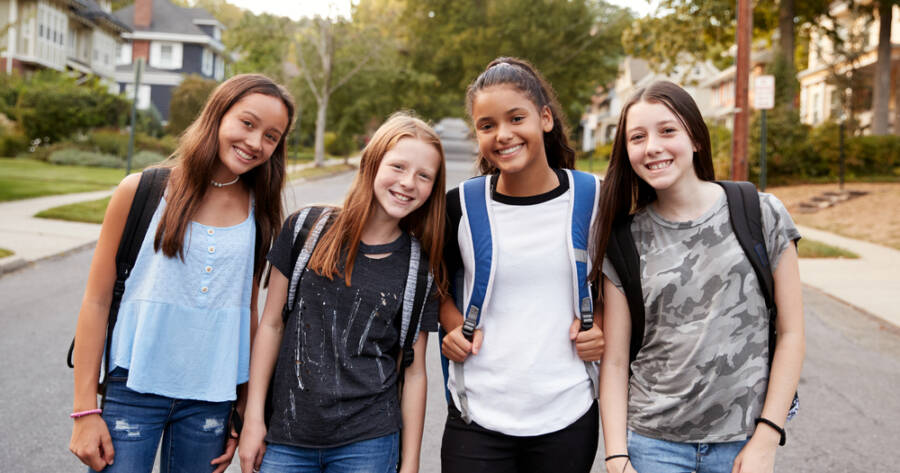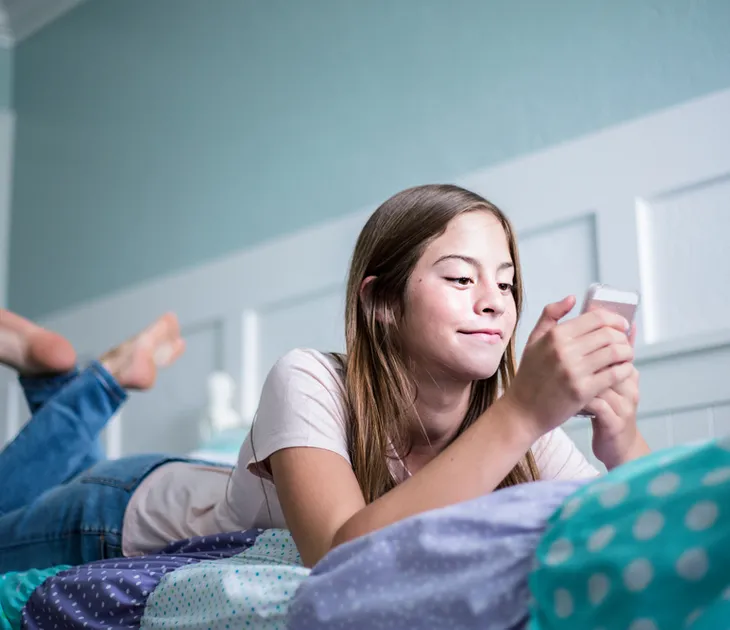It’s a well-established fact that children’s and teens’ mental health took a hit during the pandemic. But new research suggests that teen girls in particular are suffering in unprecedented ways.
A survey by the Centers for Disease Control and Prevention that was published in early February 2023 found that, in 2021, 57% of high school girls reported experiencing “persistent feelings of sadness or hopelessness in the past year,” up from 36% in 2011. That’s nearly twice as high as the 29% of males who reported having those feelings in 2021.
What’s worse, 30% of the girls surveyed reported seriously considering suicide and 13% attempted suicide one or more times in 2021. That is beyond shocking. It’s appalling.
We are a research team that studies children and their social and emotional development, and during the pandemic we’ve been specifically focused on mental health in children and adolescents. Since 2020, we’ve seen more changes in girls, overall, including increases in depression and thoughts of suicide.
In our view, a number of key factors have converged to create this mental health crisis in teen girls.
A perfect storm of factors
Previous CDC research has shown that the COVID-19 pandemic disproportionately affected girls. And in a 2021 study that our team conducted with 240 teens, 70% of girls said that they “very much” missed seeing people during the pandemic, compared with only 28% of boys reporting that sentiment.
A second factor is social media, which can be a wonderful source of support but also, at times, a crushing blow to the self-esteem and psychological well-being of girls.
Finally, we think that all young people are struggling with issues like climate change and social upheaval. These aren’t just abstractions for many boys and girls: They are their future. Children and teens are usually neither indifferent to nor unaware of political realities.
So how can parents, teachers and friends help girls through this crisis?
Here are six strategies that research shows can work.
1. More emphasis on social support
Social and emotional connectivity between humans is likely one of the most potent weapons we have against significant stress and sadness. Studies have found strong links between a lack of parental and peer support and depression during adolescence. Support from friends can also help mitigate the link between extreme adolescent anxiety and suicidal thoughts. In one study of teens, social support was linked to greater resilience – such as being better able to withstand certain types of social cruelty like bullying.
2. Supporting one another instead of competing
During the 1970s and 1980s, competition between women was seen as something that held women back. Unfortunately, this message seems to have been lost in the tsunami of media coverage about bodies, looks and social achievement. Research has found that social media encourages competition between girls, particularly around their physical appearance.
Teaching girls at young ages to be cheerleaders for one another – and modeling that behavior as grownups – can help ease the sense of competition that today’s teens are facing.
3. Showcasing achievements
Thinking about your own appearance is natural and understandable. But an overemphasis on what you look like is clearly not healthy, and it is strongly associated with depression and anxiety, especially in women.
Adults can play a key role in encouraging girls to value other qualities, such as their artistic abilities or intelligence. Childhood can be a canvas for children to discover where their talents lie, which can be a source of great satisfaction in life.
One way that adults can help is simply by acknowledging and celebrating those qualities. For instance, at the Massachusetts Aggression Reduction Center, an organization we direct and manage that is focused on prevention of bullying and cyberbullying, staff members post female achievements – be they intellectual, artistic, scientific, athletic or literary – on social media channels every Friday, using the hashtag #FridaysForFemales.
4. Empowering women
Girls look to grown women for examples of how they can behave and what they can do. You may not be the chief executive officer of a huge corporation, but maybe you are a wonderful teacher, or maybe you run a small business that provides an important product or service. Modeling pro-women attitudes means valuing all of the roles that people play in a society.
In addition, teaching the history behind women’s movements and other important steps toward equality, such as the women’s right to vote, is key to empowering girls to value themselves and their roles. Women played central roles in war efforts during World War II. Women have led social movements and fought for people’s rights. And women have been renowned scientists, writers, artists and experts in virtually every other profession you can name.
5. An honest look at social media
Social media represents a unique form of human interaction that has taken on an outsize role in the lives of teens. This is magnified for teenage girls, for whom every social media interaction may feel consequential and potentially cataclysmic.
Interacting in a fun and positive way with peers on social media platforms can be a positive and affirming experience. On the other hand, seeing the things that others post, and comparing it with your own stuff, can make people of any age feel anxious about how they’re appearing, and whether they’re being socially included or excluded. This anxiety applies to both boys and girls, but the potential for emotional distress seems to be higher for girls.
Awareness of how social media has the capacity to influence your feelings and mental health seems to help people keep some distance from their interactions on social media. Adults can help girls by discussing with them how social media influences their feelings, their self-perception and even their body image.
6. Teaching kids to recognize their feelings
Learning to recognize and label feelings doesn’t come automatically for many people. The good news, though, is that kids can learn ways to help themselves when they’re experiencing anxiety or depression. Kids can learn to appreciate how hugging their dog, playing a board game, or talking with their parent(s) can help reduce anxiety, once they understand the feelings.
We think it’s worth noting that everything discussed here can also be helpful for boys, who are by no means immune to mental health problems. Encouraging achievement recognition, understanding how moods can be influenced by social media, and increasing support for both boys and girls is a positive step as we move toward a post-pandemic world.
This article has been updated to correct Marie Curie’s place of birth.
Elizabeth Englander, Professor of Psychology, Bridgewater State University and Meghan K. McCoy, Adjunct Faculty in Psychology and Childhood Studies, Bridgewater State University
![]()
This article is republished from The Conversation under a Creative Commons license. Read the original article.









